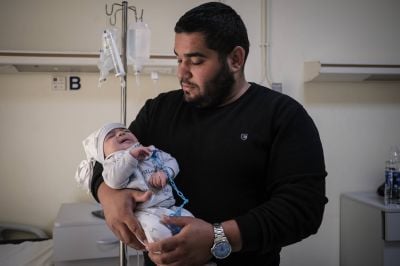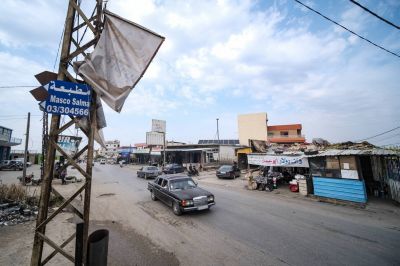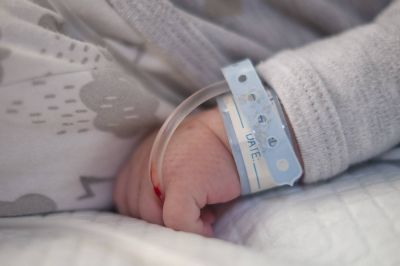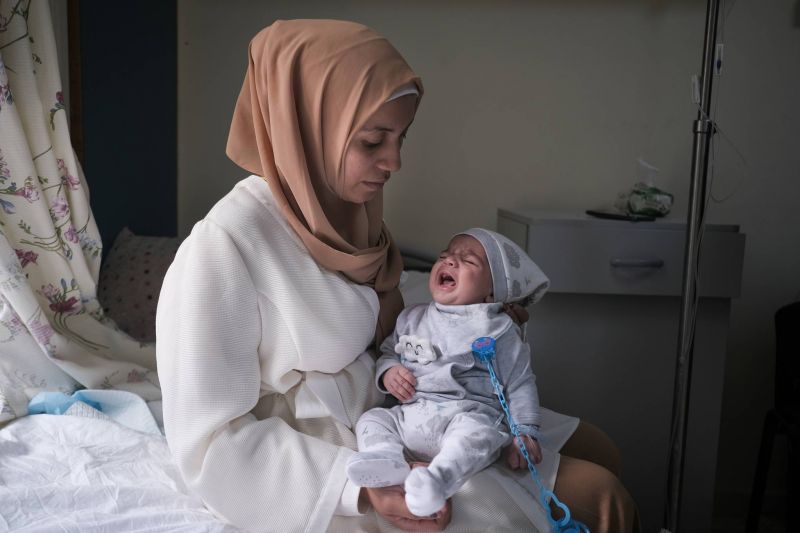
Two-month-old Abdallah, who has cholera, with his mother at Dr. Abdullah al-Rassi Government Hospital in Halba. (Credit: João Sousa/L'Orient Today)
BEIRUT — As Lebanon tackles a growing cholera outbreak for the first time in almost three decades, experts warn infants and young children are the age group most vulnerable to the brutal illness.
This is not unique to Lebanon. Reports and studies from previous cholera outbreaks indicate that young children usually contract the illness in greater numbers than other age groups. But as Lebanon simultaneously struggles from a massive economic crisis that limits access to clean water and healthcare, are there heightened risks?
Since cholera was first reported in northern Lebanon on Oct. 5, the country has recorded 18 deaths and a total of 2,722 suspected cases, by the Health Ministry’s latest count.
Nearly 45 percent of suspected and confirmed cases are below the age of 15, according to Health Ministry statistics, while 15 percent are between 15 and 24 years of age.
But the age group with the highest case count — at a quarter of all the country’s cholera cases — is children aged zero to four.
The ministry has yet to share the breakdown of ages among those who have died.
Lebanon’s caretaker Health Minister Firass Abiad said most of those who have died from cholera did so because they did not receive the necessary medical care.
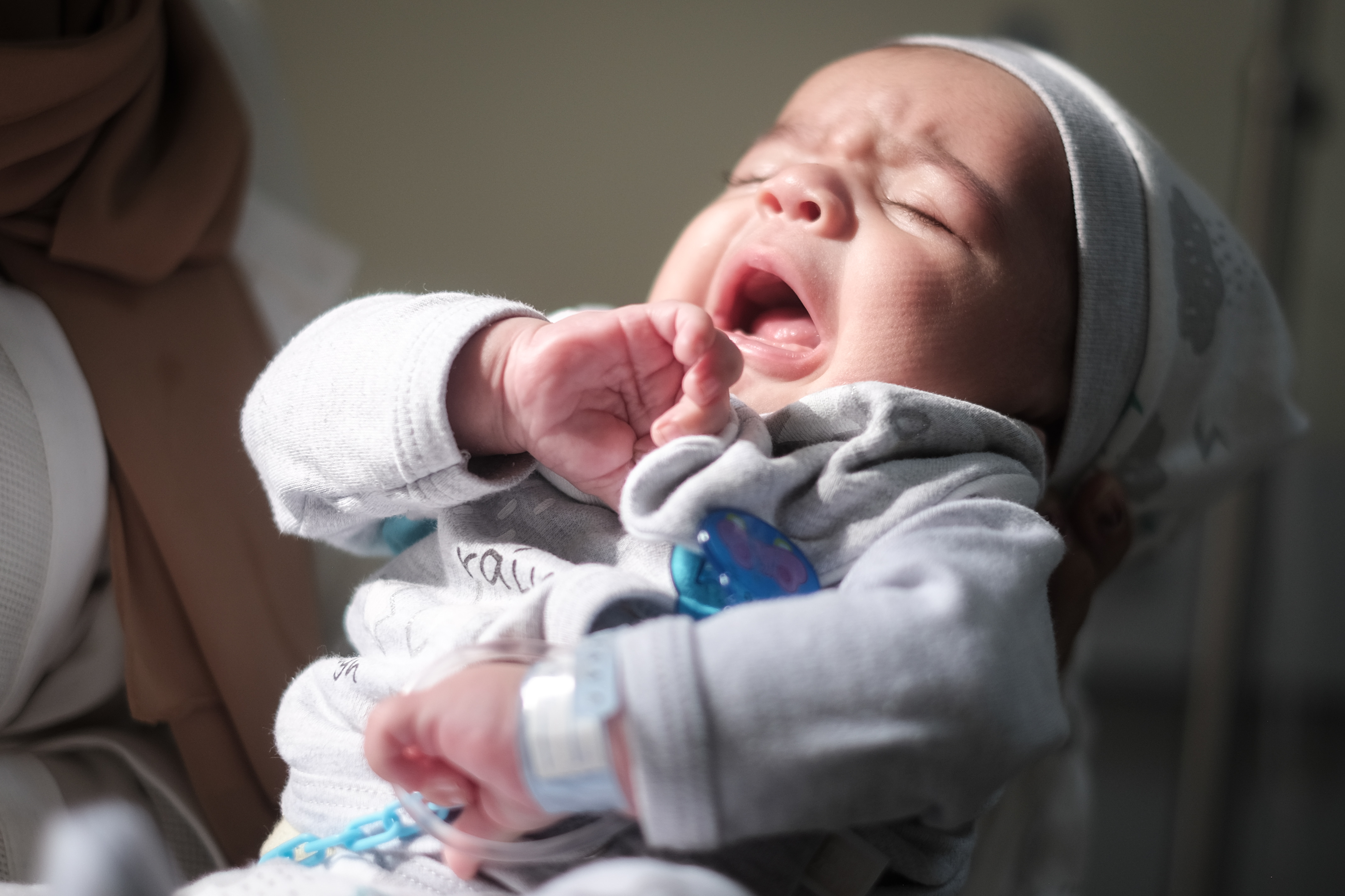 A quarter of Lebanon's cholera cases are in babies and infants aged 0-4, according to Health Ministry statistics. (Credit: João Sousa/L'Orient Today)
A quarter of Lebanon's cholera cases are in babies and infants aged 0-4, according to Health Ministry statistics. (Credit: João Sousa/L'Orient Today)
Cholera, which commonly spreads through contaminated water or food, “can be especially dangerous for babies and young children, as they have a higher rate of infection, as well as greater risk of developing severe illness,” Jennifer Moorehead, the Lebanon Country Director for UK-based aid group Save the Children, told L’Orient Today.
According to the Health Ministry, all of Lebanon’s eight governorates and 18 out of 26 districts now have confirmed cholera cases. As the illness spreads rapidly across Lebanon, the number of infected babies and children could continue to rise.
Why are children most at risk?
Dr. Robert Sacy is head of pediatrics at the Beirut Governmental Hospital in Karantina, a portside neighborhood. He told L’Orient Today he suspects infants are especially vulnerable to cholera due to baby formula, which is prepared by mixing store-bought powder with water.
In some cases, families are unable to afford steady supplies of bottled drinking water, instead relying on water potentially contaminated with Vibrio cholerae — the bacteria responsible for cholera.
Meanwhile, breastfeeding rates in Lebanon remain low, Moorehead said. She recommended breastfeeding for children as “a key preventive measure for infants.”
Sacy explained that the deadly complication that arises from cholera is dehydration due to incessant, watery diarrhea. He pointed out that adults are “more aware of when they become dehydrated, while it is more difficult to detect dehydration in children.”
Sacy added that dehydration is more detrimental when a child, whose body mass is much smaller than that of an adult and who generally has weaker immunity, loses 20 percent of their bodily fluids, versus an adult losing the same amount.
“There is much more risk to children having cholera versus adults, especially when not immediately treated,” Sacy said.
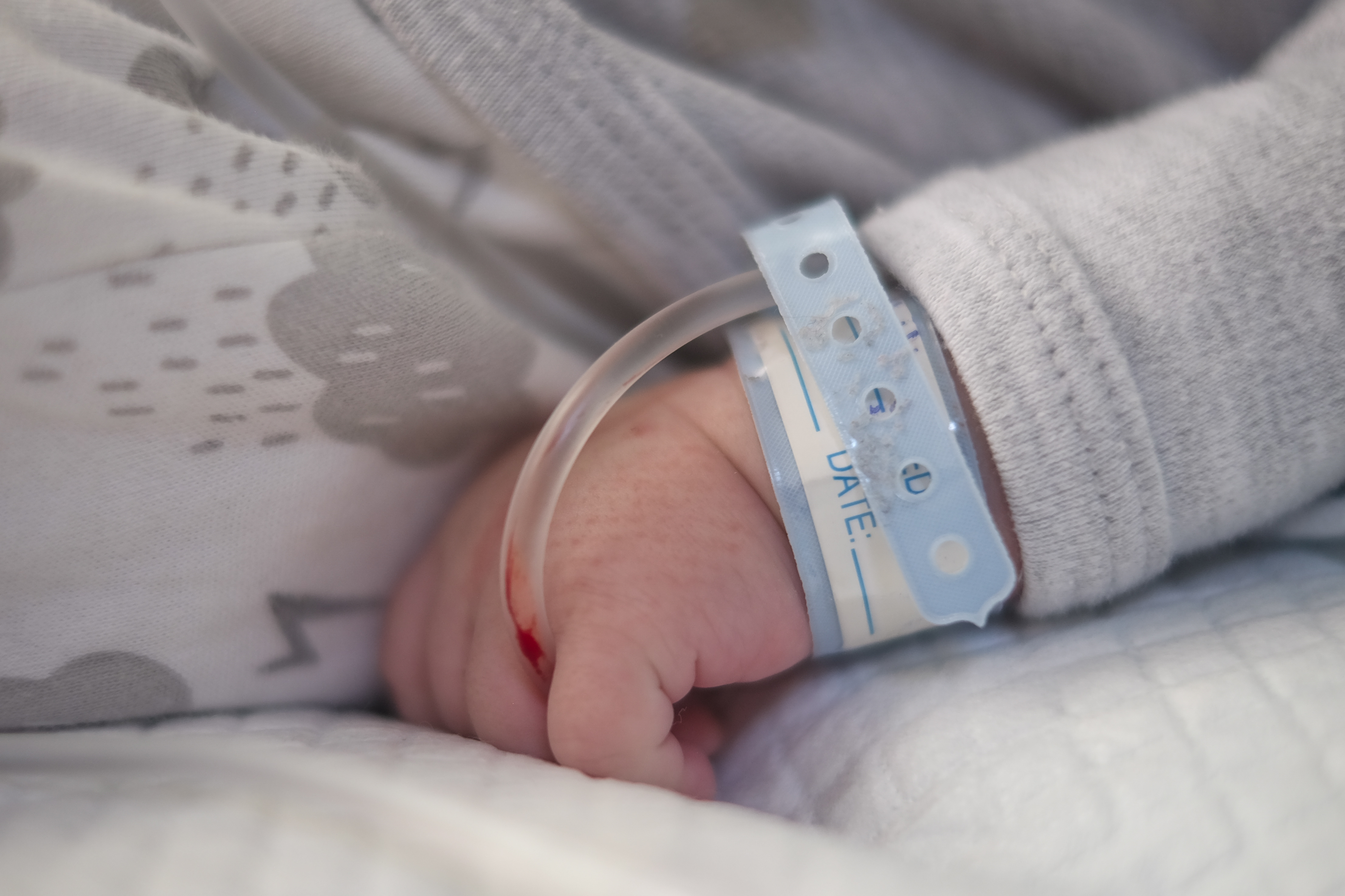 Cholera, which commonly spreads through contaminated water or food, can be especially dangerous for babies and young children. (Credit: João Sousa/L'Orient Today)
Cholera, which commonly spreads through contaminated water or food, can be especially dangerous for babies and young children. (Credit: João Sousa/L'Orient Today)
According to Lebanon’s Ministry of Health, 93 hospital beds are currently occupied by suspected cholera patients — though it’s unclear how many of those patients are children.
Contamination
Water contamination is the prime cause of Lebanon’s ongoing cholera outbreak.
Initial data from Save the Children water sampling in the Bekaa Valley showed high rates of unsafe drinking water in boreholes, which are used to extract groundwater for private use, Moorehead told L'Orient Today. There were also worrying rates of unclean water in informal tented settlements, she said, adding that cholera is more likely to spread through water that is not properly treated with chlorination and purification.
For the most part, Lebanon’s state-run water infrastructure reportedly still has safeguards in place, meaning the risk of contamination in such networks remains “very low,” Nadim Farajalla, a professor at AUB who studies Lebanese water infrastructure, recently told L’Orient Today.
Amid electricity outages, however, the state often fails to provide safe water, leaving many communities — including informal refugee settlements — to rely on privately supplied water trucked to their homes via large tanks. This water is often less regulated than state-supplied water.
Moorehead added that it is “vital to ensure support to strengthen water and sanitation infrastructure across Lebanon … with a focus on community-centered solutions.”
“This must include support to those living in displacement in camps and refugee camps,” she said.
Areas where malnutrition is common are particularly at risk for cholera, Moorehead explained. This includes refugee camps, where “cholera is more likely to flourish,” adding that “environments where there is poor water and health infrastructure are generally at a higher risk.”
According to UN figures, Lebanon hosts about 1.5 million Syrian refugees. Many of them live in informal camps without proper water or sanitation services, nor access to affordable clean food.
UNICEF, the UN’s agency for children, also sounded the alarm on children’s particular vulnerability to cholera, highlighting that food insecurity exacerbates the effects of the disease in children.
As the illness spreads in neighboring Syria, as well as in Iraq, the agency called the current outbreak “another blow to already overstretched health systems in the region.”
Correction: A previous version of this article erroneously stated that Save the Children's Lebanon country director Jennifer Moorehead said there were high levels of cholera contamination in water samples from informal tented settlements. The water samples were found to contain coliform bacteria, which are found in human and animal waste, according to Save the Children.
